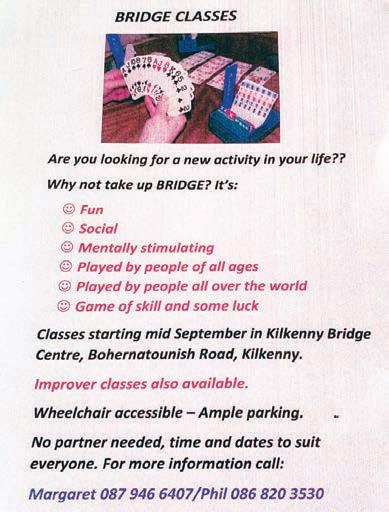
2 minute read
Our young see little option to buy a home Your Money & You John Ellis

Is it any wonder that young adults are of the opinion that they may be much older before it becomes feasible to purchase their own home – or even will not be able at all in the future.
Advertisement
is is borne out in the recent ESRI report with their ndings showing Ireland has the fourth highest rate of homeownership for households aged 40+ (just under 80%), but only the 10th highest for households aged under 40 (34%), resulting in one of the biggest gaps in ownership rates between younger and older generations.
More than one-in-four young adults aged 25-34 in Ireland remained living with parents and Ireland saw the largest rise in this share in the intervening time.
In a new study of housing prices, Co Kilkenny comes 15th in the league of house price increases between the years 2010 to 2022. In 2010 the average price was €209,911.39 and in 2022 the average was €284,960.95; that’s a 36% increase or in monetary terms €75,049.56. e study conducted by Storage World Self Storage analysed house prices to calculate the price change and the percentage increase over 12 years. e total number of occupied rental properties in the 2022 census was 513,704, up from 469,671 in 2016. is includes properties rented from a private landlord (330,632), local authority (153,192) or voluntary/co-operative housing body (29,880). In the 2016 to 2022 period, the number of occupied dwellings rented from a private landlord increased by 7% to more than 330,000.

As to be expected Co Dublin’s growth is considerably higher making it nearly a separate case compared with all other counties with an 80% price increase over the years, from €332,941.86 to €598,906.89, a total rise of €265,955.03. Second on the list is Wicklow, with a 68% increase. In 2010 the average price for a house was €293,963.28, meanwhile, in 2022, it was €494,460.59 - a rise of €200,497.31. Kildare is third, with a 63% increase from 2010 to 2022. Waterford is ninth with 44%, and Wexford closes the top ten with a 43% increase.
Younger adults are not the only a ected cohort as the the 2022 census showed a disturbing trend developing for older people. e rate of home ownership is continuing to decline along with an increase in renters aged 65 and over. ere was a signicant increase in the number of households with people aged 65 and over renting from a private landlord to almost 17,000 households, up 83% since 2016.
A new research report by the national housing charity reshold and Alone has found that a quarter of older renters expect to remain in the private rental sector for life, as they felt no other accommodation options were available. Older renters are more likely to be living alone and renting for longer periods than their younger counterparts in the sector. ey are also more likely to be in receipt of rental assistance. ose aged 65+ and renting from a private landlord are likely to be spending more than 35% of their disposable income on rent (CSO 2021).
CEO of Alone Seán Moynihan, said: “ e report highlights what we have seen building and have been campaigning on for 10 years. is evidence now further shows the housing needs of older people and proves the e ect of no security of tenure for older people in the rental sector.
“Older people in private rented accommodation have lower standards of living and have poorer health & wellbeing outcomes. We need to plan and build for this increasing amount of people, before it is too late, for whom renting is their only housing option. is report highlights the areas that need to be addressed, including ring fencing social housing in line










